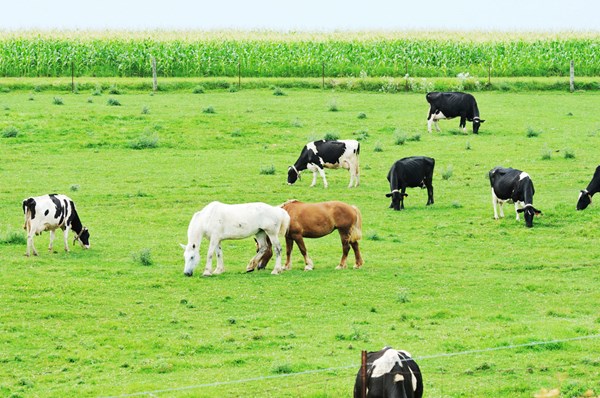 Credit: Thinkstock
Credit: ThinkstockVesicular stomatitis is a viral disease that primarily affects horses and cattle and occasionally swine, sheep, goats, llamas and alpacas. Humans can also become infected with the disease when handling affected animals, but this is a rare event. Vesicular stomatitis has been confirmed only in the Western Hemisphere and usually occurs during the warmer months, often along waterways. In the past decade, the Southwestern and Western United States have experienced a number of vesicular stomatitis outbreaks. For current information on vesicular stomatitis outbreaks, or summaries of the most recent past outbreaks, visit the APHIS website.
In affected livestock, the incubation period for vesicular stomatitis ranges from two to eight days. Often, excessive salivation is the first sign of the disease. Close examination of the mouth initially reveals blanched and raised vesicles or blister?like lesions on the inner surfaces of the lips, gums, tongue and/or dental pad. The blisters swell and break, which causes oral pain and discomfort and reluctance to eat or drink. If there are no complications such as secondary infection, affected animals typically recover in about two weeks. In horses, vesicular lesions generally occur on the upper surface of the tongue, the lips, around nostrils, corners of the mouth and gums. Lesions in horses may also be expressed as crusting scabs on the muzzle, sheath, lips or ventral abdomen.
While vesicular stomatitis does not generally cause animals to die, it can still cause economic losses to livestock producers. The disease is particularly significant because its outward signs are similar to those of foot?and?mouth disease, a foreign animal disease of cloven hoofed animals that was eradicated from the United States in 1929. The only way to tell these diseases apart is through laboratory tests.
Vesicular stomatitis is recognized internationally as a reportable disease. When the disease is detected in the United States, some countries may take action to block international trade of U.S. animals and animal products. Interstate movement of animals is also impacted. Premises containing affected animals are quarantined until 21 days after the lesions in the last affected animals have healed. As a result, quarantine periods can be lengthy.
How vesicular stomatitis spreads is not fully known; insect vectors, mechanical transmission and movement of animals are all factors. Once the disease is introduced into a herd, it may move from animal to animal by contact or exposure to saliva or fluid from ruptured vesicles. Humans rarely contract vesicular stomatitis, but they can become infected. In people, the disease causes an acute influenza-like illness with symptoms such as fever, muscle aches, headache and malaise. To avoid exposure to this disease, individuals should use personal protective measures when handling affected animals.
There is no specific treatment or cure for vesicular stomatitis. Good sanitation and quarantine practices on affected farms usually contain the infection. When a definite diagnosis is made on a farm, the following procedures are recommended:
- Separate animals with lesions from healthy animals. Animals on pastures tend to be affected more frequently with this disease.
- As a precautionary measure, do not move animals from premises affected by vesicular stomatitis until at least 21 days after lesions in the last affected animal have healed.
- Implement on?farm insect control programs that include the elimination or reduction of insect breeding areas and the use of insecticide sprays.
- Use personal protective measures when handling affected animals to avoid human exposure to this disease.
Veterinarians and livestock owners who suspect an animal may have vesicular stomatitis or any other vesicular disease should immediately contact State or Federal animal health authorities. Diagnosis of the disease cannot be made based on clinical signs but requires testing of samples at an approved facility. A diagnosis can generally be made in a week or less.
Currently, the Minnesota Board of Animal Health does not have specific restrictions on horses going to or coming from states that have cases of vesicular stomatitis. Regulatory agencies in affected states quarantine and restrict movement from herds that are affected with the disease. If horse owners choose to visit an affected state, they are assuming some risk that their horse could become infected. If the horse becomes infected, it would be quarantined in that state until it has fully recovered.
For more information on vesicular stomatitis, visit the APHIS website.
You can sign up for the University of Minnesota horse newsletter on their website.


